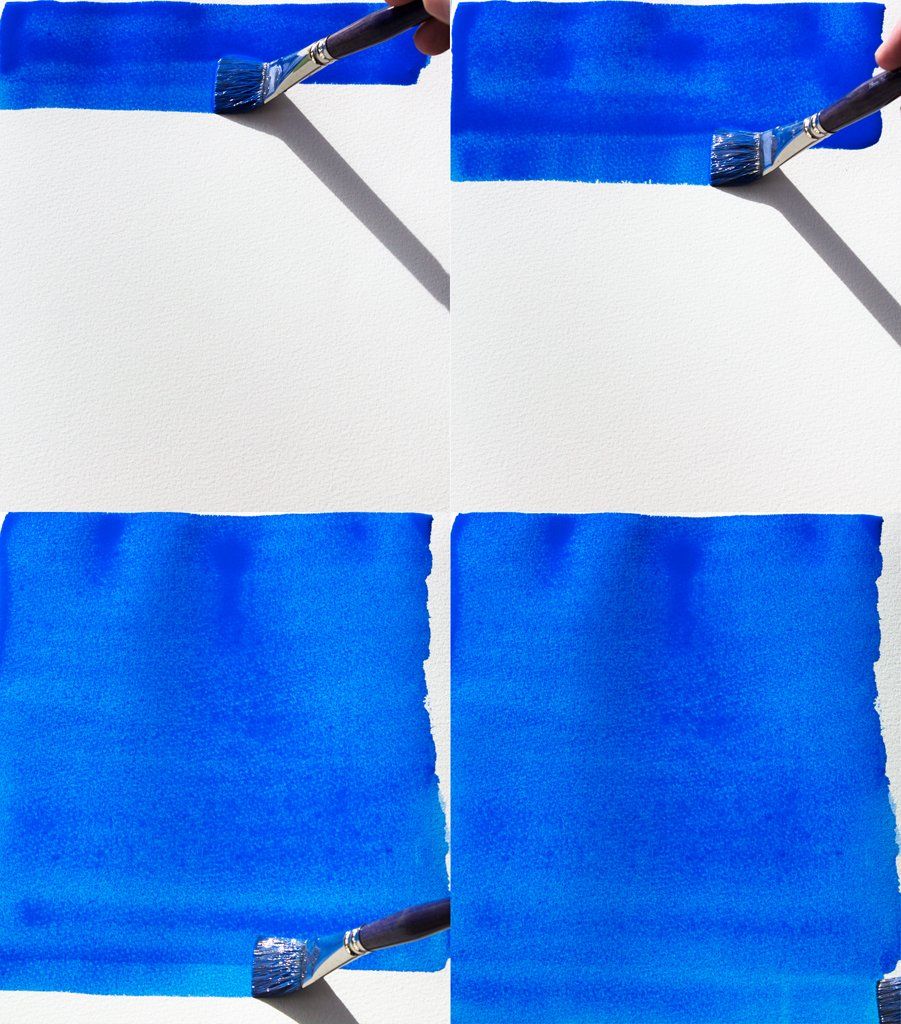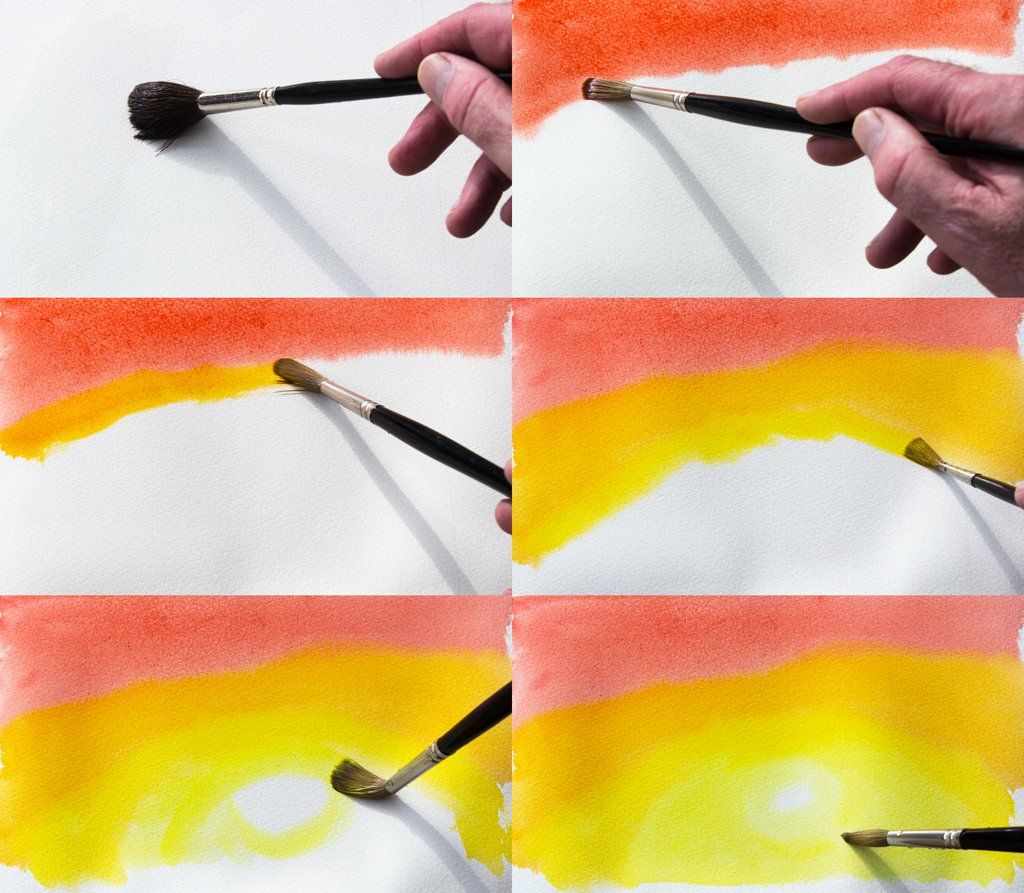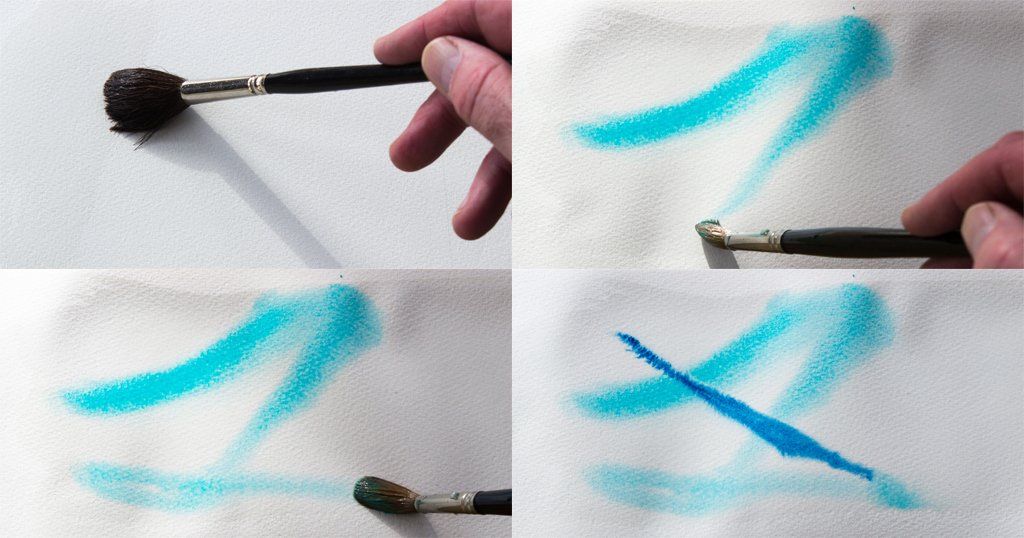ARTicles
Tips for Practicing Traditional Watercolour Techniques
Part 1
Just starting out or a seasoned watercolourist, it is fun to go back to basics and “play” with your watercolours

Figure 1: Flat wash of Cobalt Blue Professional Watercolour from A J Ludlow
At the bottom of the paper, remove the excess watercolour by wiping along the edge with a tissue or damp cloth.
Variegated wash - combination of loose wet washes of different hues:
On a wet sheet of paper, apply successive liquid washes of colour (figure 2). Add each new colour where the last brush stroke finished, so that the colours run together. This type of wash can also be applied using successive strokes of colour to create a striated effect.
Figure 2: Variegated wash using Cadmium Red, Orange and Yellow watercolours
The technique of “mingling” is very similar to the variegated wash, but is kept to a localised area. It is where different coloured washes are placed alongside each other and are allowed to naturally blend at the point they meet (see figure 3).
Figure 3: Blending watercolour by “mingling”
Graduated wash – also known as a gradated or graded wash:
This type of wash uses the same process as the flat wash, but the colour’s tone gradually lightens with each successive sweep across the paper. This can be achieved either on dry paper by dipping the brush into clean water after each sweep, or alternatively on wet paper by allowing the colour to flow out of the brush whilst drawing it rapidly from side to side as it is traversed down the paper (figure 4).
Figure 4: Graduated wash of Prussian Blue watercolour on wet paper
Wet-in-wet – applying colour to paper that has been previously wetted:
It could be argued that the technique of wet-in-wet is the same as a variegated wash as it involves the application of colour (from a wet brush) on to a wet surface, but the use this technique can be used to do so much more than just washes. It is said that the resulting effect of this technique is that which defines watercolour and cannot be reproduced in any other medium (with the exception of acrylics). This technique can be used to soften and blur simple brush strokes, creating objects in the distance or reflections in water. It is ideal for using colour spontaneously, allowing the watercolour to run evenly outwards from where the brush has touched the wet surface and feather out attractively as the colour dilutes. There is always an uncontrollable element to this technique that allows the watercolour to take over, which is great to watch.
Figure 5: Wet-in-wet application of watercolour show softened and feathered edges
Dry brush – refers to brushwork done on dry paper, giving crisp-edged marks:
Figure 6: Dry brush marks on CP (NOT) watercolour paper showing the white of the paper through the brush stroke
The effects of dry brush are dependent on the type of brush used and are greatly influenced by the paper’s surface; whether it is smooth (hot pressed), lightly textured (cold pressed) or heavily textured (rough), the brush marks will be different. With a variety of different brush mark, using different brushes an astonishing array of patterns can be created (a selection is shown in figure 7).
Figure 7: Some examples of different brush strokes to give a variety of different watercolour marks
In next month’s ARTicle, I shall continue sharing with you other techniques, but like the ones above, just reading about them is not the best or fun way to develop or improve skills. There is no other way but to get on and try these techniques for yourself. Halfway through, inspiration may take over and the flat wash of cobalt blue may be just too tempting to leave and so becomes the start of a dramatic sky or bright seascape. You never can tell.

















